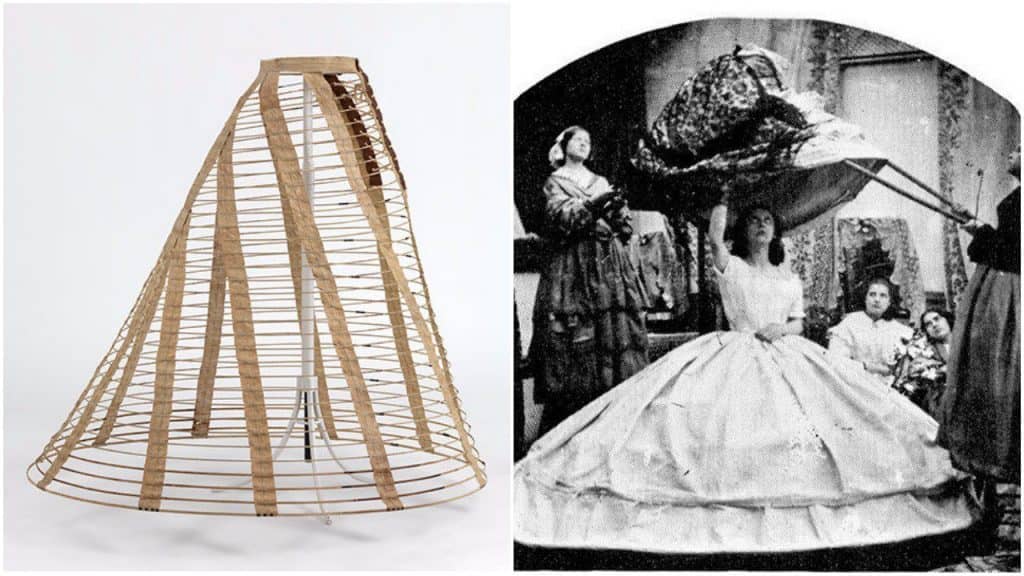Ever wonder why almost every woman from 1800s pictures are all stuffy and puffy looking? The secret lies beneath their attire in shape of the crinoline. Crinoline was a woman’s large petticoat that originally was made from very stiff horsehair to keep the much liked and fashionable hoop skirts of the 1800s in its place.
The horsehair fabric was then replaced by stiffened cotton, and then eventually with spring steel lines creating the cage crinolines. The circumference of a crinoline ranged from a few feet up to about fifteen feet. And after the advent of the steel frame, the petticoat was worn over the steel frame with the dress on top of both.
Crinoline was first only popular with the elite, but soon enough picked up by most of the Europe, Britain and its colonies.
But the luxury of looking classy came at the price of being in extreme discomfort at all times. Women had to be super careful when sitting down as the rigid would pop out with any elaborate movement, and tear through the dress. The puffy width of the dress also made it difficult to walk through narrow doorways and typical Victorian parlors.
Other problems include how the bottoms of the skirts got entangled in the wagon wheels, which made boarding any wagon or even a train very difficult. The dresses were often caught by the wind, causing the wearer to get knocked down to the ground and the hoops in the air leading to very unlady-like exposing.
A manufactured hoop did lead to very few conveniences too, like how women in the Civil War era used the crinoline to smuggle medicines, guns, ammunition, etc. into the Confederacy under their large skirts.
But the crinoline soon turned from an inconvenience into a hazard, as their highly flammable threads often caught fire, leading to over 3,000 women being killed.
As Vintage News narrates,
“In 1858, a woman in Boston was standing too close to her fireplace when her skirt caught fire, and it took only minutes for her entire body to be consumed. In February 1863, Margaret Davey, a 14-year-old kitchen maid, had her crinoline catch fire as she reached up to the mantle for a set of spoons, later dying from the severity of her burns.”
They add, how just within tow months over 19 more women died in England with their crinolines catching fire. Adding insult to injury, the women witnessing the accident couldn’t even help the burning ones due to the danger of their skirts catching fire. In Philadelphia, up to nine ballerinas died when a mere candle brushed a skirt at the Continental Theater.
More horrific accidents as narrated by the Vintage News include,
“In 1898, a textile company, Courtaulds, restricted their factory workers from wearing crinolines due to a newspaper report of the death of Ann Rollinson, who died from injuries after machinery caught her crinoline at the Firwood bleach works.”
“Later that year, 16-year-old Emma Musson was burned to death when a burning coal rolled from the kitchen fireplace and came to rest on her crinoline. In 1864, The New York Times reported that almost 40,000 women throughout the world had died because of crinoline fires.”
Although it could have ideally come sooner, the “Crinolinemania” finally died out in the late 1800s, but not before claiming the lives over 3000 women!

